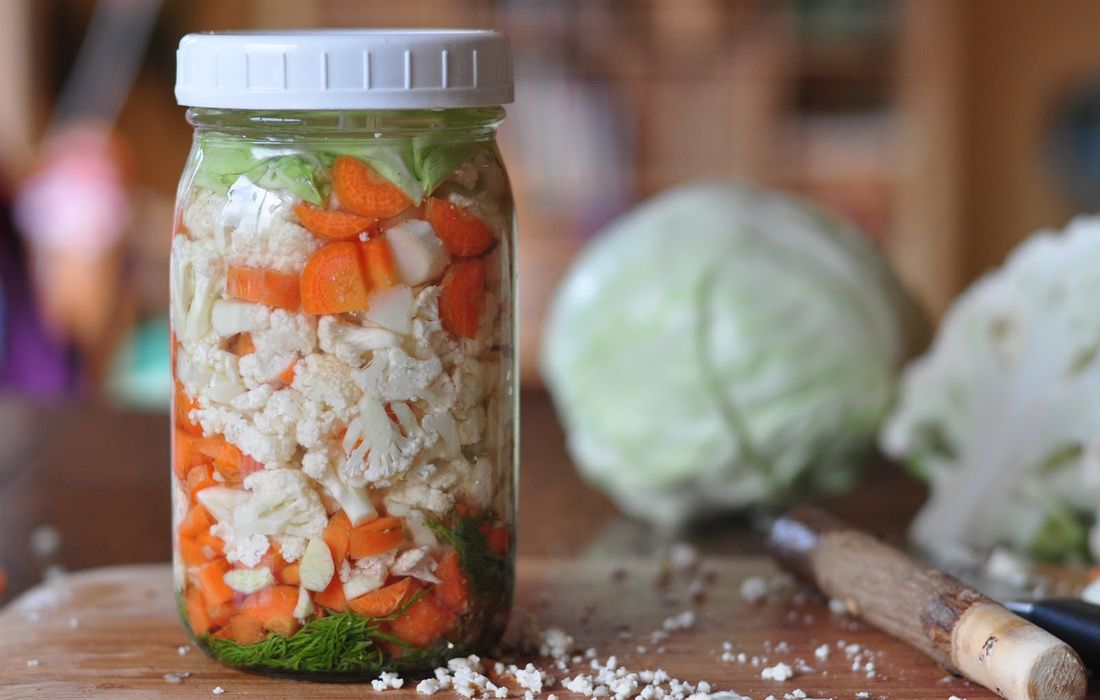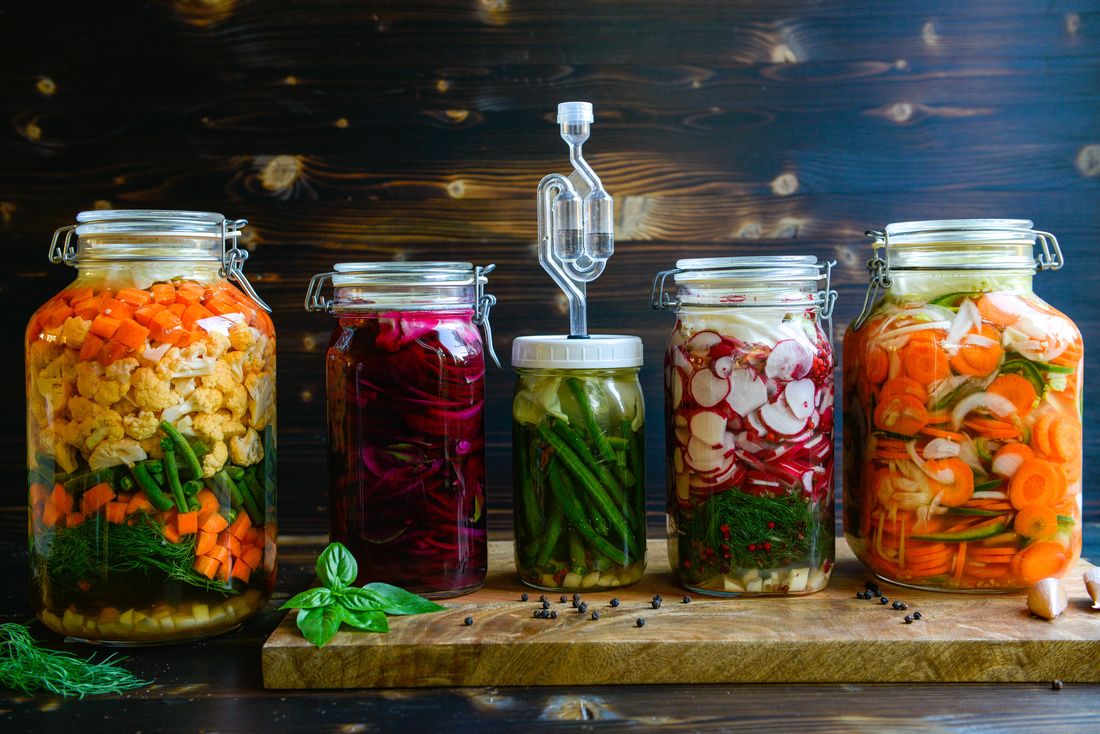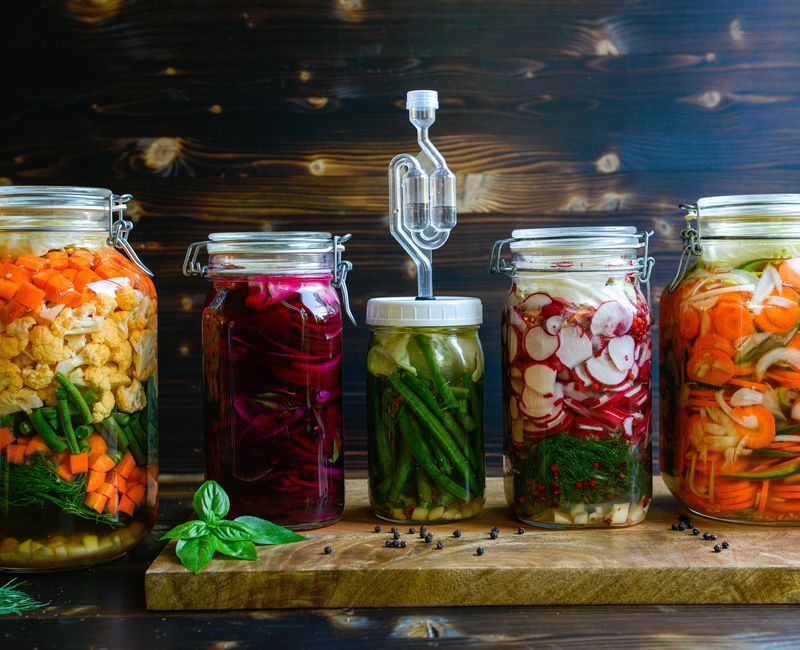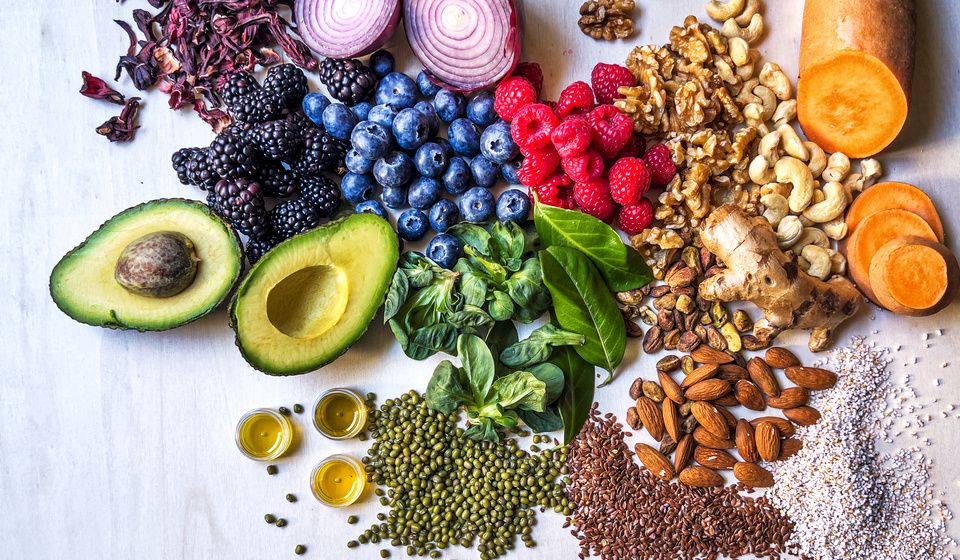How to Make Lacto-Fermented Vegetables
Ali Segersten Feb 13, 2012 127 comments
Lacto-fermented vegetables are cultured vegetables. You've probably heard of sauerkraut, kim chi, and sour dill pickles, right? These are all forms of lacto-fermentation. Many people use whey as a starter but it is not necessary as long as you use enough salt. Making your own lacto-fermented vegetables is so easy that once you start you'll be hooked!
Traditionally, lacto-fermentation was used to preserve the harvest and store vegetables for the winter. If you have a garden full of cabbage, cauliflower, beets, carrots, and green beans and don't know how to store them all, consider making a few batches of lacto-fermented vegetables. These veggies can be stored in your refrigerator for months....if they last that long!
Lacto-fermented vegetables provide a viable source of beneficial microbes to help heal and maintain a healthy gut. These beneficial microorganisms attach to receptors in our guts that send a signal to the immune system that says everything is okay, no need to overreact to foods and other things entering the gut, let's keep everything calm. If you are dealing with multiple food sensitivities, chances are your gut is out of balance and is in need of a daily dose of beneficial microorganisms. These crispy, sour, salty vegetables are highly addicting and an easy, economical way to help maintain a healthy gut. These vegetables are also important to include daily if you are following an Elimination Diet.
Use your lacto-fermented vegetables to top cooked quinoa, beans, and chopped leafy greens. Serve them atop grilled fish or chicken. Serve them with scrambled eggs for breakfast. Serve them as an appetizer for a holiday meal. I like to add them to salmon or chicken salads made with mayonnaise. Just try to restrain yourself from eating the whole jar in one sitting....it may be a little too much salt all at once! You can also whisk some of the leftover brine with olive oil, a squirt of dijon mustard, and a dash of honey for a delicious probiotic salad dressing!
Ready to bring more probiotic power into your meals?
Inside our Nourishing Meals® membership, you’ll find a beautiful collection of fermented vegetable recipes—along with the tools to make them part of your daily rhythm. Save your favorites, add them to a personalized meal plan, and instantly generate grocery lists to simplify your week.
✨ Let food be your daily medicine—organized, inspired, and deeply healing.

About the Author
Alissa Segersten, MS, CN
Alissa Segersten, MS, CN, is the founder of Nourishing Meals®, an online meal-planning membership with over 1,800 nourishing recipes and tools to support dietary change and better health. As a functional nutritionist, professional recipe developer, and author of The Whole Life Nutrition Cookbook, Nourishing Meals, and co-author of The Elimination Diet, she helps people overcome health challenges through food. A mother of five, Alissa understands the importance of creating nutrient-dense meals for the whole family. Rooted in science and deep nourishment, her work makes healthy eating accessible, empowering thousands to transform their well-being through food.Nourishing Meals Newsletter
Email updates.








Add Comment
Comments
Just another positive comment here on how easy this looks now! I have also been wanting to try this for a while and have been daunted by the details. I may just pick up some veggies and plastic lids on the way home from work today and get started. Thank you!
Mollie
www.thealmondflower.com
I never thought about fermenting cauliflower! I love it pickled so I'm sure I'll love it fermented. Can't wait to try it.. thanks
This is great! I'm getting together with some friends this weekend and trying it together ;).
Besides making dressing with the brine, is there anything else that can be done with it? Can I use it again to pickle more veggies?
Just checked on my first batches of fermented veggies. They are on their seventh day and are definitely on their way to being very tasty. They're tasty now but need at least three more days.
I tried one batch with lemon juice (4 tablespoons juice per 2 cups of water). They did NOT turn out. BLEAH! More lemon juice will be needed if this method is to be successful.
Thank you! I have been looking to try making lacto-fermented veggies but have always been put off by the need for whey in recipes. Now I have a way! Can't wait to try it!
Ali,
I've been lurking on your site for quite awhile. I love your recipes and I can't wait to try this. I've been wanting to try fermenting at home and really appreciate the video!!
amazing!! what a wonderful post.
I adore fermented veggies.
peace & raw health,
elizabeth
I'm trying this tonight!! I've made two jars so far. Do I need to scoop off "scum" before eating? Some other blogs say to do that, especially when adding cabbage in with the other veggies or can I just eat it right away? Thanks!!!
Wow you make it sound so simple and stress free. I've wanted to make these for so long but my fear of "canning" and poisoning everyone in the house keeps me rooted to my chair!!!
You inspire me to just try it!!!
This is such a helpful post because I am on the Elimiation diet right now and needed something to give my Phase 1 meals a little extra kick. However, I was hoping you could clarify why some of the items not allowed in Phase 1 are not reintroduced lated in a subsequent phase. Specifically vanilla, vinegar, buckwheat, and mushrooms. I have noticed that this question has come up before in the comments list and I was hoping for a confirmation that they are ok after Phase 1. Thank you so much for all the work you have put into this website--it, (along with your cookbook), has been an incredible resource for me.
If you ever come up with a way to make Natto at home I would love to see a tutorial. I loves me some Natto.
Star - I think you are referring to the botulism toxin. Green beans and other low-acid vegetables need to be pressure canned to destroy botulism. Botulism grows in low-acid, anaerobic environments. When you ferment fresh vegetables you encourage the growth of bacteria that produce acid. The acidic environment does not allow for botulism to grow. It is only something you need to be concerned about when canning, not fermenting. :)
I was wondering about the green beans. In traditional canning we are warned about them producing dangerous if not lethal toxins if not processed properly. Is this an issue with lacto fermation as well?
I have wanted to try this for awhile now, but seeing your pretty photos and easy recipe is much more inspiring. Thank you!
This is great Ali, and awesome job with the video Tom!
Thank you, thank you! This is my new obsession and your video will be helpful. We made fermented veggies for the first time that were ready yesterday and the only problem was that we ate half the quart immediately!
Karen - The cabbage is there to serve as a "weight" and hold down the veggies so they stay submerged in the water (and also offer some beneficial bacteria). It is not meant for eating. Once the veggies are done, you remove the cabbage leaf and compost it. If you really don't want to use it you can place a smaller plastic lid on top of the veggies with a boiled rock or some other weight to keep the vegetables submerged.
Tasharuu, Rochelle - I have not tried the lemon juice method with this type of lacto-fermentation so not sure if it could work. I was referring to the type where the majority of the vegetables used are finely ground cabbage. There isn't a brine as the juices from the cabbage are enough to cover the ground vegetables. I may need to experiment now and see if it works!
Jennifer and Jaclyn - Lactobacilli are found on all vegetables and fruits in varying amounts. Cabbage and pickling cucumbers have a lot. I've fermented all sorts of veggies, even without the cabbage leaf present, and they all work.
J - Those are just wide-mouthed quart jars which you can buy practically anywhere...your local food co-op, grocery store, etc. I also have a Harsch Fermentation Crock which I purchased through Azure Standard (free shipping).
This is great, I've fermented cabbage before with mixed results. It comes out different everytime. I'm going to give this a try. I was wondering where you purchased your containers, I've been looking for a good fermenting container.
wonderful post! and love the video! just a question: i thought either cabbage or cucumbers had to be included in the fermented veggies in order for the proper bacteria to grow...can you clarify this?
Great video!! Thanks for making it so clear, so beautiful, and so smart. Roxanne Sukol MD "Your Health is on Your Plate" http://yourhealthisonyourplate.com
I'd like to know how the lemon juice to water ratio too as my kids complain about my veggies being too salty. Thanks!
You mentioned in the newsletter fermenting without the salt, using Lemon Juice what might that look like in terms of lemon juice to water ratio. Also what do you think about using actual fermenting type products such as Body Ecology. I have used it with really good success but have been hesitant to do salt. I like the idea of Lemon Juice!
I've always wanted to do this but have been too intimidated. Thank you for making this simple! Looks so good!
Heather Gerard
this is wonderful! I have been wanting to try lacto-fermenting my own veggies for a while, but all the other recipes online seemed confusing or daunting. Thank you for such a straightforward, easy post. I can't wait to try it!
Thanks for the tutorial, I am a visual learner and love to see it rather than read it. I am wondering if the cabbage leaf on top is required? Is there a substitute I could use as I don't care for cabbage?
Thank again,
Karen
What a cool video guys!! thank you for sharing!!! TOM, that hair!! You're starting to look like my husband! Really enjoyed the tutorial. I've done this several times with cabbage, but never with other vegetables.. looking forward to trying it out!